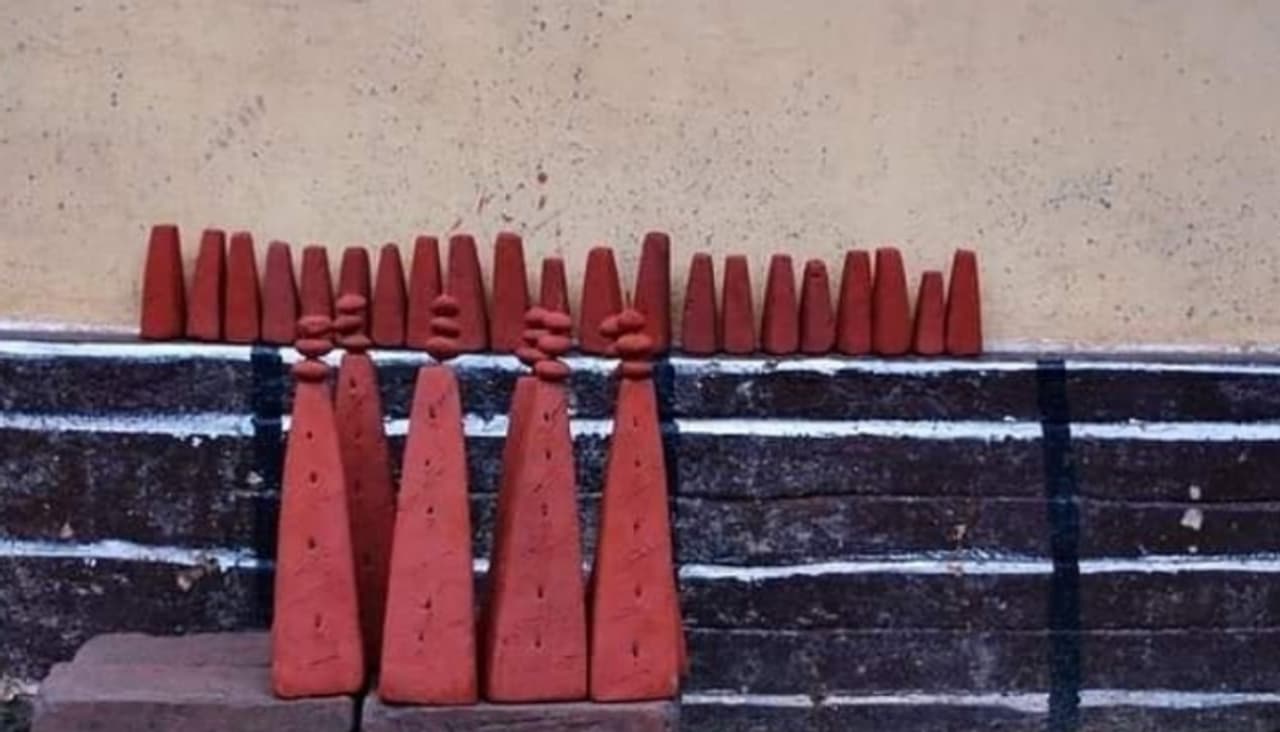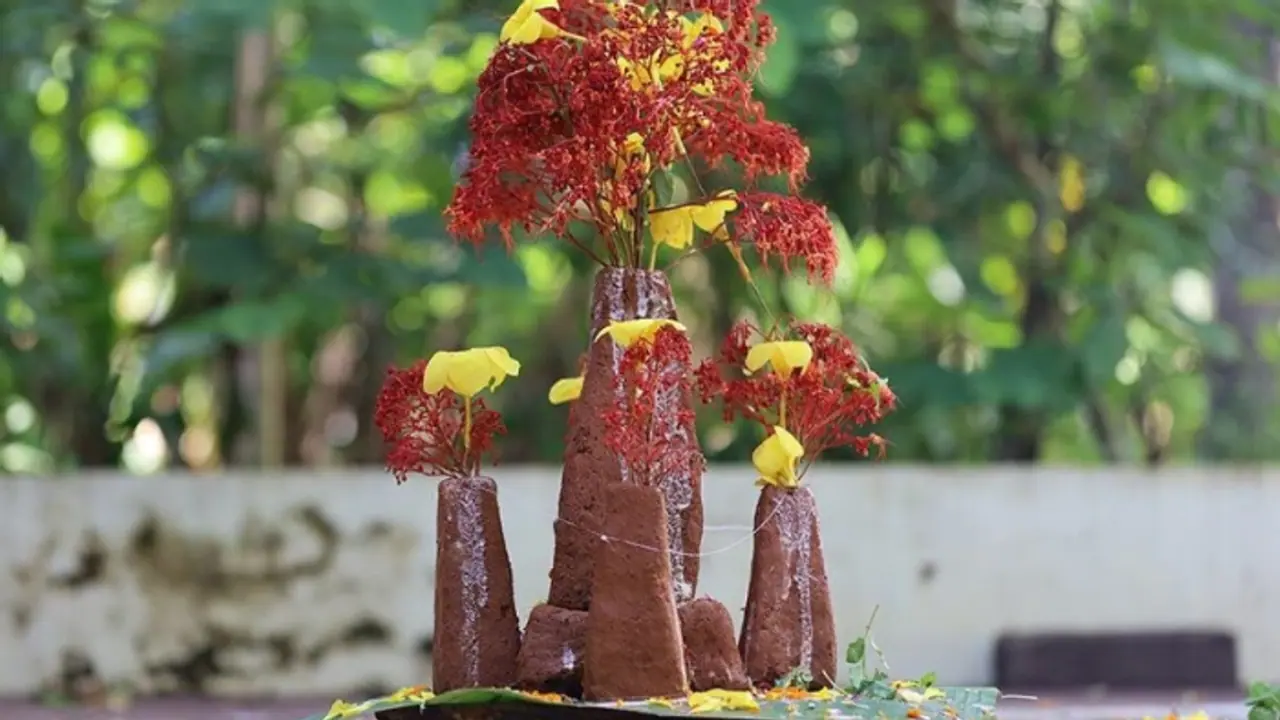Thrikakkara Appan is a central figure in Onam celebrations in Kerala. Traditionally, a mound of clay or rice flour shaped like a pyramid, known as Thrikakkara Appan, is created and decorated with flowers during Onam. This figure is associated with the legend where Vishnu sent the demon king Mahabali to the netherworld from Thrikakkara.
One of the famous stories related to Onam is that of Thrikakkara Appan. Traditionally, during Onam, people create flower arrangements with a mound of clay shaped like a pyramid at the centre of the floral design. This mound is known as Thrikakkara Appan. Depending on the region, it is also referred to as Onathappan.

According to tradition, people who cannot attend the Thrikakkara festival in person celebrate at home by installing Thrikakkara Appan and performing the rituals. Many believe that Thrikakkara Appan symbolizes Buddhist stupas. Let’s explore more about the history of Thrikakkara Appan.
Mahabali and Vamana
Thrikakkara Appan represents Vamana, the incarnation of Lord Vishnu. Some people consider it to be Mahabali Chakravarthy or Vishnu himself. This figure is also called Onathappan. The principal installation of Thrikakkara Appan is in the famous Thrikakkara Temple in Ernakulam district, Kerala. It is closely linked with the history of Onam. According to belief, Vishnu sent Mahabali to the netherworld from Thrikakkara. The place where Vishnu’s feet touched came to be known as Thrikakkara, which eventually became the name of the place.
Making Thrikakkara Appan
Thrikakkara Appan is made using clay or mud. Typically, this structure is flat and has four faces. In some places, it is made in the shape of a cone. Nowadays, ready-made statues of Thrikakkara Appan are available in the market during Onam. When welcoming King Mahabali to their homes, people place Thrikakkara Appan, made from rice flour, on a plate, decorate it with flowers, and perform rituals. It is placed alongside the flower arrangements.
Tradition on Uthradam day
Traditionally, on Uthradam day, Thrikakkara Appan is installed in the courtyard of homes. It is made of clay and is prepared before Uthradam, dried, and then placed. On Uthradam day, five Thrikakkara Appans are placed in the courtyard, with one large and two small ones on either side. This form is decorated with rice flour, Krishna’s crown, hibiscus, and other offerings. Hibiscus flowers are inserted into the structure.

Four faces
The unique form of Thrikakkara Appan, with its four faces, is believed by some to represent the four stages of a human’s life. Generally, people set up three structures representing the three steps of land requested by Vamana from Mahabali.
Special festival
According to the most popular Onam legend, Vishnu in his Vamana avatar pushed Mahabali to the netherworld. However, Vishnu granted Mahabali the boon to visit his people once a year. It is also said that Mahabali attained 'Vishnu Sayujyam' and a place in Vaikuntha. Therefore, Onam becomes a special festival to welcome both Mahabali and Vishnu’s Vamana incarnation, turning it into a celebration.
Famous Thrikakkara
Thrikakkara is located 10 kilometers from Kochi on the Edappally-Pookattupady road. Thrikakkara is said to have been the capital of King Mahabali. Here, there is a famous temple of Vishnu known as ‘Thrikakkara Appan’ or ‘Vamana Murthy.’ This installation of Vamana Murthy is unique to Kerala, with no similar installation found elsewhere in the state. The temple at Shucheendram in Kanyakumari district, Tamil Nadu, depicts this intriguing historical tale artistically.
